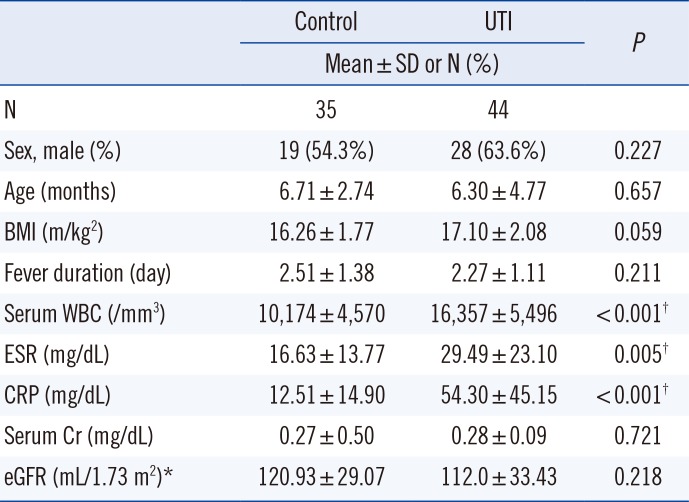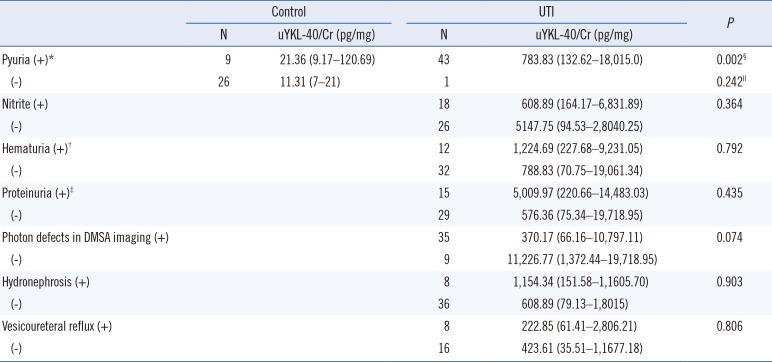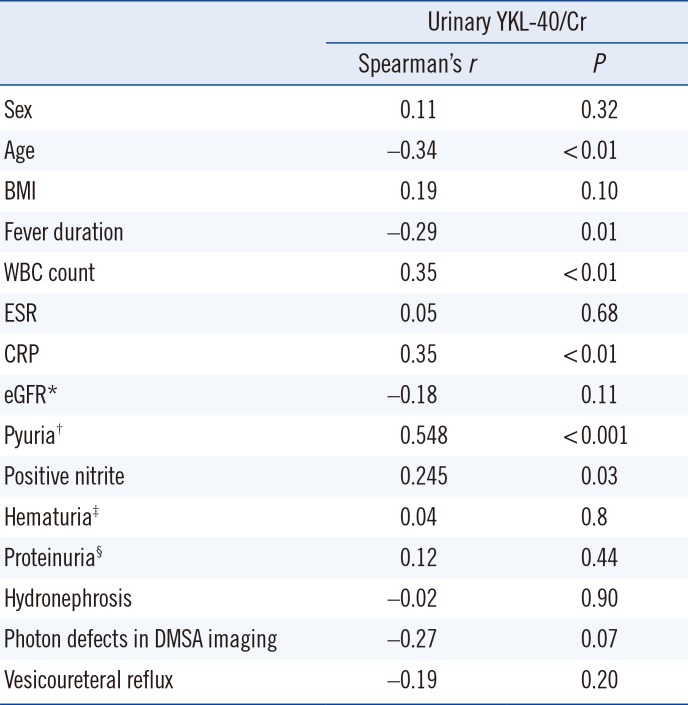1. Johansen JS, Williamson MK, Rice JS, Price PA. Identification of proteins secreted by human osteoblastic cells in culture. J Bone Miner Res. 1992; 7:501–512. PMID:
1615759.
2. Volck B, Price PA, Johansen JS, Sorensen O, Benfield TL, Nielsen HJ, et al. YKL-40, a mammalian member of the chitinase family, is a matrix protein of specific granules in human neutrophils. Proc Assoc Am Physicians. 1998; 110:351–360. PMID:
9686683.
3. Lee CG, Da Silva CA, Dela Cruz CS, Ahangari F, Ma B, Kang MJ, et al. Role of chitin and chitinase/chitinase-like proteins in inflammation, tissue remodeling, and injury. Annu Rev Physiol. 2011; 73:479–501. PMID:
21054166.
4. Johansen JS. Studies on serum YKL-40 as a biomarker in diseases with inflammation, tissue remodelling, fibroses and cancer. Dan Med Bull. 2006; 53:172–209. PMID:
17087877.
5. Prakash M, Bodas M, Prakash D, Nawani N, Khetmalas M, Mandal A, et al. Diverse pathological implications of YKL-40: answers may lie in ‘outside-in’ signaling. Cell Signal. 2013; 25:1567–1573. PMID:
23562456.
6. Fantino E, Gangell CL, Hartl D, Sly PD, Arest CF. Airway, but not serum or urinary, levels of YKL-40 reflect inflammation in early cystic fibrosis lung disease. BMC Pulm Med. 2014; 14:28. PMID:
24576297.
7. Tang H, Sun Y, Shi Z, Huang H, Fang Z, Chen J, et al. YKL-40 induces IL-8 expression from bronchial epithelium via MAPK (JNK and ERK) and NF-kappaB pathways, causing bronchial smooth muscle proliferation and migration. J Immunol. 2013; 190:438–446. PMID:
23197259.
8. Tran HT, Lee IA, Low D, Kamba A, Mizoguchi A, Shi HN, et al. Chitinase 3-like 1 synergistically activates IL6-mediated STAT3 phosphorylation in intestinal epithelial cells in murine models of infectious colitis. Inflamm Bowel Dis. 2014; 20:835–846. PMID:
24694795.
9. Ostergaard C, Johansen JS, Benfield T, Price PA, Lundgren JD. YKL-40 is elevated in cerebrospinal fluid from patients with purulent meningitis. Clin Diagn Lab Immunol. 2002; 9:598–604. PMID:
11986266.
10. Aronson PL. Evaluation of the febrile young infant: an update. Pediatr Emerg Med Pract. 2013; 10:1–17.
11. Tullus K. Difficulties in diagnosing urinary tract infections in small children. Pediatr Nephrol. 2011; 26:1923–1926. PMID:
21773821.
12. Bressan S, Andreola B, Zucchetta P, Montini G, Burei M, Perilongo G, et al. Procalcitonin as a predictor of renal scarring in infants and young children. Pediatr Nephrol. 2009; 24:1199–1204. PMID:
19205751.
13. Tullus K, Fituri O, Burman LG, Wretlind B, Brauner A. Interleukin-6 and interleukin-8 in the urine of children with acute pyelonephritis. Pediatr Nephrol. 1994; 8:280–284. PMID:
7917851.
14. Yim HE, Yim H, Bae ES, Woo SU, Yoo KH. Predictive value of urinary and serum biomarkers in young children with febrile urinary tract infections. Pediatr Nephrol. 2014; 29:2181–2189. PMID:
24924751.
15. Keays MA, Guerra LA, Mihill J, Raju G, Al-Asheeri N, Geier P, et al. Reliability assessment of Society for Fetal Urology ultrasound grading system for hydronephrosis. J Urol. 2008; 180:1680–1682. PMID:
18708207.
16. Suh JS, Kim SH, Cho KS, Jung IA, Cho WK, Jeon YJ, et al. Urinary markers in the early stage of nephropathy in patients with childhood-onset type 1 diabetes. Pediatr Nephrol. 2016; 31:623–631. PMID:
26525196.
17. Waikar SS, Sabbisetti VS, Bonventre JV. Normalization of urinary biomarkers to creatinine during changes in glomerular filtration rate. Kidney Int. 2010; 78:486–494. PMID:
20555318.
18. Barr DB, Wilder LC, Caudill SP, Gonzalez AJ, Needham LL, Pirkle JL. Urinary creatinine concentrations in the U.S. population: implications for urinary biologic monitoring measurements. Environ Health Perspect. 2005; 113:192–200. PMID:
15687057.
19. Edefonti A, Tel F, Testa S, De Palma D. Febrile urinary tract infections: clinical and laboratory diagnosis, imaging, and prognosis. Semin Nucl Med. 2014; 44:123–128. PMID:
24484749.
20. Finnell SM, Carroll AE, Downs SM. Subcommittee on Urinary Tract I. Technical report-Diagnosis and management of an initial UTI in febrile infants and young children. Pediatrics. 2011; 128:e749–e770. PMID:
21873694.
21. Waseem M, Chen J, Paudel G, Sharma N, Castillo M, Ain Y, et al. Can a simple urinalysis predict the causative agent and the antibiotic sensitivities? Pediatr Emerg Care. 2014; 30:244–247. PMID:
24651215.
22. Kim SH, Lyu SY, Kim HY, Park SE, Kim SY. Can absence of pyuria exclude urinary tract infection in febrile infants? About 2011 AAP guidelines on UTI. Pediatr Int. 2016; 58:472–475. PMID:
26607772.
23. Huang K, Wu LD. YKL-40: a potential biomarker for osteoarthritis. J Int Med Res. 2009; 37:18–24. PMID:
19215669.
24. Schmidt IM, Hall IE, Kale S, Lee S, He CH, Lee Y, et al. Chitinase-like protein Brp-39/YKL-40 modulates the renal response to ischemic injury and predicts delayed allograft function. J Am Soc Nephrol. 2013; 24:309–319. PMID:
23291472.
25. Lee JH, Kim SS, Kim IJ, Song SH, Kim YK, In Kim J, et al. Clinical implication of plasma and urine YKL-40, as a proinflammatory biomarker, on early stage of nephropathy in type 2 diabetic patients. J Diabetes Complications. 2012; 26:308–312. PMID:
22705282.
26. Hall IE, Stern EP, Cantley LG, Elias JA, Parikh CR. Urine YKL-40 is associated with progressive acute kidney injury or death in hospitalized patients. BMC Nephrol. 2014; 15:133. PMID:
25128003.








 PDF
PDF ePub
ePub Citation
Citation Print
Print


 XML Download
XML Download